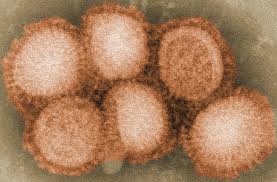Abstract
One of the greatest influenza pandemic threats at this time is posed by the highly pathogenic H5N1 avian influenza viruses. To date, 61% of the 433 known human cases of H5N1 infection have proved fatal. Animals infected by H5N1 viruses have demonstrated acute neurological signs ranging from mild encephalitis to motor disturbances to coma. However, no studies have examined the longer-term neurologic consequences of H5N1 infection among surviving hosts. Using the C57BL/6J mouse, a mouse strain that can be infected by the A/Vietnam/1203/04 H5N1 virus without adaptation, we show that this virus travels from the peripheral nervous system into the CNS to higher levels of the neuroaxis. In regions infected by H5N1 virus, we observe activation of microglia and alpha-synuclein phosphorylation and aggregation that persists long after resolution of the infection. We also observe a significant loss of dopaminergic neurons in the substantia nigra pars compacta 60 days after infection. Our results suggest that a pandemic H5N1 pathogen, or other neurotropic influenza virus, could initiate CNS disorders of protein aggregation including Parkinson’s and Alzheimer’s diseases.







